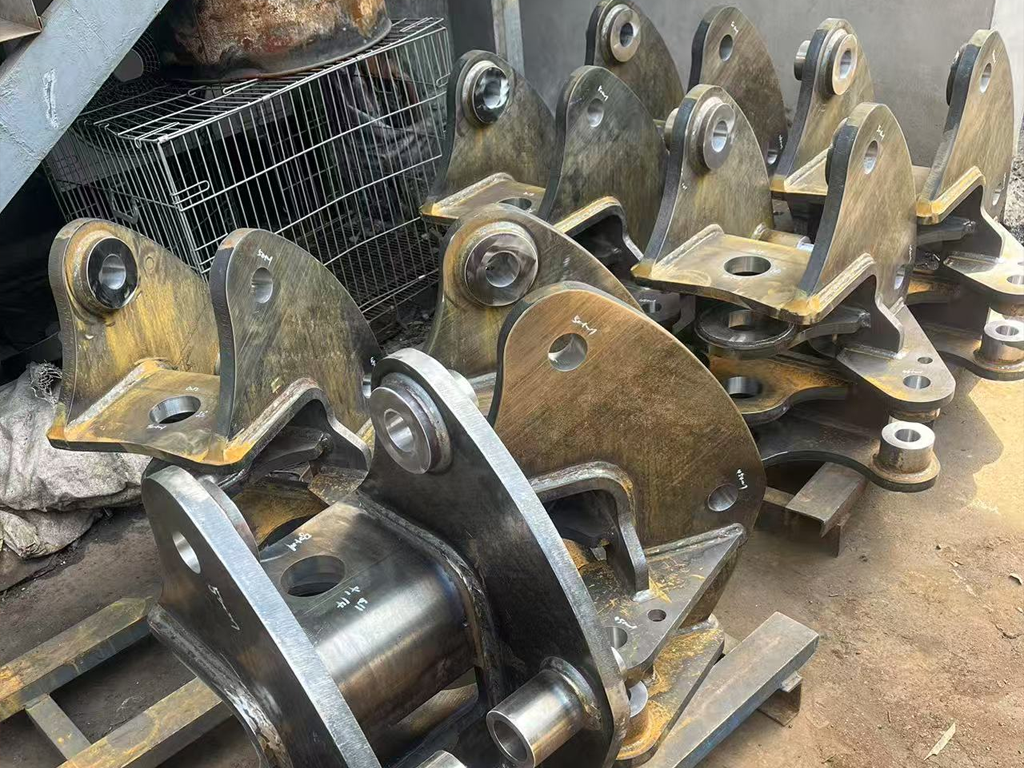ข้อมูลติดต่อ
วังเจียเจี่ยว ทาวน์หยุนหลง เขตอินโจว เมืองหนิงโป แคว้นเจ้อเจียง สาธารณรัฐประชาชนจีน

บทนำ
เทคโนโลยีการเชื่อมได้พัฒนามาจากวิธีการเชื่อมแบบดั้งเดิมอย่างการตีเหล็กหลอมมาเป็นเทคนิคสมัยใหม่อย่างการเชื่อมอาร์กและการเชื่อมด้วยแก๊ซอ็อกซี-เชื้อเพลิง โดยมีความก้าวหน้าที่สำคัญเกิดขึ้นในช่วงปลายศตวรรษที่ 19 เทคโนโลยีเหล่านี้ได้วางรากฐานให้กับวิธีการเชื่อมที่หลากหลายในปัจจุบัน
การพัฒนาในระยะเริ่มต้น
ในช่วงต้นศตวรรษที่ 20 โดยเฉพาะช่วงสงครามโลก ความต้องการเทคนิคการเชื่อมที่มีประสิทธิภาพและความน่าเชื่อถือสูงเพิ่มขึ้น ส่งผลให้เกิดนวัตกรรมต่างๆ เช่น การเชื่อมแบบต้านทาน และการพัฒนาระบบการเชื่อมอัตโนมัติ ซึ่งช่วยเพิ่มประสิทธิภาพและความสามารถในการผลิตของการเชื่อม
การ พัฒนา ทาง เทคโนโลยี
ภายในช่วงกลางศตวรรษที่ 20 เทคโนโลยีอย่างการเชื่อมด้วยเลเซอร์และการเชื่อมด้วยลำอิเล็กตรอนได้ปรากฏขึ้น พร้อมกับความแม่นยำที่สูงขึ้น การกำเนิดระบบหุ่นยนต์สำหรับการเชื่อมในอุตสาหกรรมการผลิตยังได้ปฏิวัติกระบวนการทำงานอีกครั้ง เพิ่มความเร็วและความเที่ยงตรงในการผลิต
การใช้งานในอุตสาหกรรม
การเชื่อมโลหะปัจจุบันมีความสำคัญต่ออุตสาหกรรมต่างๆ เช่น อุตสาหกรรมยานยนต์ อากาศยาน และอุตสาหกรรมต่อเรือ เทคนิคต่างๆ เช่น การเชื่อมแบบ MIG, TIG และการเชื่อมแบบต้านทาน ถือเป็นขั้นตอนปฏิบัติมาตรฐาน โดยมีระบบหุ่นยนต์ช่วยเพิ่มศักยภาพในการผลิต แม้จะมีความก้าวหน้าด้านเทคโนโลยีเหล่านี้ แต่การเชื่อมโลหะยังคงเป็นกิจกรรมที่มีความเสี่ยงสูง ซึ่งจำเป็นต้องมีมาตรการความปลอดภัยที่เหมาะสม
ความปลอดภัย
ความเสี่ยงที่เกิดขึ้นตามธรรมชาติของการเชื่อมโลหะ ได้แก่ อาการไหม้ พลังงานไฟฟ้าช็อต และการสัมผัสก๊าซพิษ จำเป็นต้องมีมาตรการความปลอดภัยอย่างเข้มงวด อุปกรณ์ป้องกันส่วนบุคคล (PPE) และระบบระบายอากาศที่เหมาะสม มีความสำคัญอย่างมากในการลดความเสี่ยงเหล่านี้ และเพื่อให้แน่ใจว่าสภาพแวดล้อมการทำงานมีความปลอดภัย
แนวโน้มในอนาคต
อนาคตของการเชื่อมโลหะจะได้รับการกำหนดโดยความก้าวหน้าด้านระบบอัตโนมัติ ปัญญาประดิษฐ์ และโครงการที่เน้นความยั่งยืน ระบบการเชื่อมอัจฉริยะและการดำเนินการที่เป็นมิตรต่อสิ่งแวดล้อม จะช่วยเพิ่มประสิทธิภาพ ลดต้นทุน และแก้ไขปัญหาด้านสิ่งแวดล้อมภายในอุตสาหกรรม
สรุป
เทคโนโลยีการเชื่อมยังคงมีความก้าวหน้าอย่างต่อเนื่อง ส่งผลกระทบต่ออุตสาหกรรมต่าง ๆ ทั่วโลก เมื่อนวัตกรรมผลักดันให้เกิดวิธีการและมาตรฐานความปลอดภัยใหม่ ๆ การเชื่อมจะยังคงเป็นองค์ประกอบสำคัญของกระบวนการผลิตในยุคปัจจุบัน
 ข่าวเด่น
ข่าวเด่น